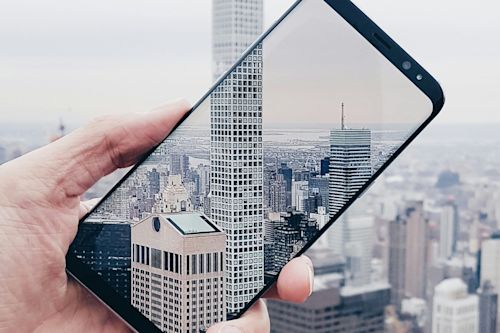Barrier-Free Sailing: How Cruise Ships Are Embracing Accessibility at Sea
According to the World Health Organization (WHO), approximately 16% of the global population — about 1.3 billion people — live with significant disabilities. This figure continues to rise due to the ageing of societies and the growing incidence of diseases that can cause long-term impairment. This community represents both a powerful voice against marginalization and a remarkable example of resilience, striving to overcome the physical and psychological barriers they still face in daily life. At the same time, it has also become an increasingly influential consumer group within the travel and tourism industry.
Several studies confirm that when conditions are favorable, people with disabilities travel and spend significantly more. In the United States, for instance, they spent 58 billion dollars on domestic travel in 2018 — an increase of 339% since 2015, a remarkable surge that highlights the potential unleashed when barriers are reduced and inclusive products are offered.
Cruise tourism, meanwhile, remains one of the fastest-growing segments in global travel. In 2024, it welcomed 34.6 million passengers, and projections estimate a record 37.7 million in 2025. The global fleet now comprises 310 ocean-going vessels, with 56 new ships planned through 2036, representing an estimated investment of 56.8 billion dollars — much of it focused on comprehensive accessibility and sustainability solutions.
For years, cruise operators have been advancing the principles of inclusive tourism, integrating a growing range of accessible features and services on board to ensure comfort and mobility for all travelers — including those with functional diversity.
Legal Requirement and Corporate Responsibility

Legislative initiatives such as the Americans with Disabilities Act (ADA) — which prohibits discrimination against people with disabilities — have ensured that cruise ship facilities and boarding docks in the United States must be accessible to travelers of all kinds.
Despite this legal framework, the road toward universal accessibility in cruise travel remains long and complex. Mobility, hearing, vision, cognitive, and other special needs must all be considered, which is why it is still often necessary for travelers to contact the cruise line or a travel advisor in advance to confirm that their specific requirements can be met.
Nevertheless, cruise operators, aware of their corporate responsibility, continue to introduce measures that make their ships increasingly inclusive. These include, for example, detailed accessibility forms that passengers can complete online before boarding to ensure personalized support.
In general, the newer the vessel, the broader the range of accessibility options it tends to offer. However, itineraries also deserve careful evaluation: does the ship dock directly at ports of call, or must passengers disembark using tender boats? Many ports still lack full accessibility infrastructure.
Planning ahead — both on board and ashore — remains essential, as accessible accommodations and shore excursions often sell out quickly.
Cruise Companies Respond to Demand
Cruise lines such as Royal Caribbean and Disney Cruise Line have long set the benchmark for safe and inclusive environments at sea. Much of their fleets are designed to accommodate travelers with reduced mobility or hearing and visual impairments. Some companies are also introducing solutions for neurodivergent passengers, including sensory-friendly entertainment, quiet zones, and personalized shore excursions. Others, like Marella Cruises, provide comprehensive accessibility information, helping travelers with disabilities know exactly what to expect before boarding.
Accessible staterooms on modern cruise ships are carefully designed to meet a wide range of needs. For example, ships in the Oasis class, such as Utopia of the Seas, feature 45 ADA-certified accessible staterooms. But what exactly defines an accessible stateroom? Its design minimizes or removes door thresholds, ensuring they are wide enough to allow wheelchair maneuverability. Inside, the cabin provides a minimum turning radius of 1.5 meters, guaranteeing full mobility. In case of emergency, cruise lines such as Saga Cruises include visual alarm systems in cabins to alert deaf or hard-of-hearing travelers.
Bathrooms follow a similar approach: low or threshold-free entries, wider doors, and ample maneuvering space. Adapted showers include fold-down seats and grab bars in both the shower and toilet areas. For instance, Royal Caribbean ships feature lowered lavatories designed for wheelchair users and people of shorter stature.
Accessible Luxury Experiences

Luxury cruise lines go beyond standard accessibility measures, offering larger suites, dedicated caretaker rooms, and even accessible private balconies. Some also provide added benefits such as complimentary room service, priority boarding, and personalized assistance for passengers with specific needs.
Today, most cruise ships accommodate electric wheelchairs and mobility scooters, though it remains important to check individual policies in advance. This is not only because of vehicle dimensions, but also because certain ships restrict usage to models powered by gel, dry cell, absorbent fiberglass, or lithium-ion batteries. As batteries must be charged within the passenger’s cabin, it is often recommended to travel with a scooter featuring removable batteries for easier handling.
Assistance dogs are also welcome aboard, though passengers must notify the cruise line ahead of time. Accessible staterooms typically offer additional space to comfortably accommodate service animals, and many ships provide designated relief areas for them during the voyage.
Accessible Leisure Activities On Board

Theaters and entertainment venues on modern cruise ships are increasingly designed with accessibility in mind. Assistive listening systems and wheelchair-friendly seating areas ensure that all guests can enjoy performances comfortably. In public areas, gradual ramps provide easy access to lounges and dining spaces, while many pools feature shallow entry zones or wheelchair lifts — as seen on several ships operated by P&O Cruises.
For guests with hearing impairments, Disney Cruise Line offers assistive devices, closed captioning, and American Sign Language (ASL) interpreters. Travelers who are visually impaired can request large-print menus in dining areas and access audio descriptions for onboard films. On P&O Cruises, for example, stateroom numbers and elevator buttons are transcribed in Braille, ensuring full independence and orientation throughout the ship.
Floating Smart Cities — for Everyone

Today’s cruise ships have evolved into floating smart cities, capable of meeting virtually every passenger need. Through virtual assistants, connected mobile devices, and personalized smart lighting, life on board has become far easier for travelers with disabilities.
Cabin access is increasingly adapted through keyless systems that rely on intelligent sensors or biometric identification, ideal for passengers with limited dexterity or difficulty handling keys or cards. Wearable technology has also become common: wristbands and smartwatches enable guests to unlock cabins, access restricted areas, make purchases, or even order food and drinks directly from the poolside.
To make navigation more accessible for visually impaired passengers, platforms such as Orange’s SARA app provide voice-guided information on the ship’s position, course, and progress, enhancing orientation and independence at sea.
The most cutting-edge cruise lines now feature integrated, barrier-free layouts that allow passengers to move seamlessly from one area to another — promoting accessibility, social interaction, relaxation, and the discovery of gastronomic or entertainment experiences for everyone on board.
Accessibility Training for Staff and Crew

Professional accessibility training for all staff has become a cornerstone of the modern cruise experience. At Celebrity Cruises, customer service and reservation agents are certified Accessible Travel Agents through SNG, a company that rents medical and mobility equipment to passengers with special needs and helps develop practical accessibility plans before, during, and after each trip.
The Your Butler service at MSC Yacht Club provides personalized assistance throughout the voyage — accompanying travelers, making restaurant and activity reservations, and instructing onboard staff on guests’ specific requirements.
Meanwhile, Carnival Cruise Line became the first in the industry to earn KultureCity’s Sensory Inclusion Certification, which requires ongoing crew training and provides passengers with sensory bags containing tools designed to help soothe, relax, and manage sensory overload.
Extensive Return on Investment

Investing in accessible tourism delivers results almost immediately. The global market of people with disabilities represents more than $6.9 trillion in annual purchasing power — a vast and often underserved customer base. In sectors like hospitality and tourism, accessibility is still too often treated as secondary, and this oversight costs both guests and businesses alike.
Travelers with disabilities increasingly expect personalization, transparency, and empathy. Industries that fail to adapt risk losing ground to those that recognize accessibility not only as a social responsibility, but as a strategic lever for growth, reputation, and measurable return on investment.



